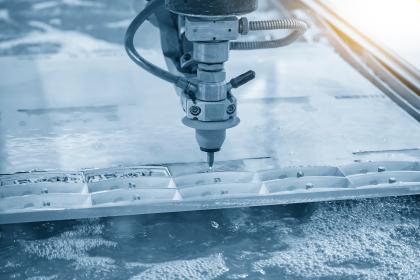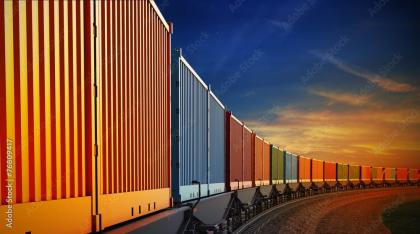What is metal cutting and fabrication?
Metal cutting and fabrication are essential processes in manufacturing and construction, involving the shaping, forming, and assembly of metal materials to create a wide range of products. These processes are crucial in industries such as automotive, aerospace, construction, and manufacturing.
At Macroseal, we use different methods for metal cutting, incorporating both traditional techniques like sawing and shearing, as well as more advanced methods like CNC machining and waterjet cutting. These diverse approaches enable us to effectively shape raw metal materials according to your particular dimensions and configurations. This crucial step in the manufacturing process facilitates the creation of components and parts with precise dimensions to meet your specific requirements.
Our advanced techniques contribute to precision and efficiency in metal fabrication. This capability allows us to manufacture a broad spectrum of metal products, spanning from simple metal brackets and frames to intricate assemblies such as machinery, structural components, and architectural elements. The metal fabrication process involves a series of processes, including cutting, bending, welding, machining and assembling metal components.
Process For Metal Cutting and Fabrication
The metal fabrication process begins with the design phase, wherein the product is conceptualized with careful consideration of dimensions, materials, and chosen manufacturing methods. Following this, the cutting process comes into play, where metal sheets or bars undergo precise cutting methods to attain the required shapes and sizes. Then the metal is shaped through bending or forming to achieve the desired contours. The welding phase follows, during which pieces are joined together either manually or through automated welding processes, ensuring structural integrity. Additional machining processes may be applied to further refine the product's features, contributing to its overall precision. Finally, in the assembly phase, various components are brought together to create the final product with the specified design and functionality.
Materials Used for Metal Cutting and Fabrication
In this field, we use a diverse range of common metals routinely, including steel, aluminum, stainless steel, copper, and brass. These materials form the foundation for crafting an extensive range of products.
Additionally, metal alloys find widespread application, serving to enhance specific properties crucial for various applications. Alloys are strategically used to augment characteristics such as strength, corrosion resistance, or heat resistance, ensuring that the fabricated metal products meet specific performance requirements in different industries.
The careful selection and incorporation of these metals and alloys contribute significantly to the versatility and functionality of the final products in the cutting and fabrication processes.
Moreover, our waterjet machine is capable of cutting a wide range of metals, including hardened tool steel, aluminum, titanium, and various exotic metals that can pose challenges for other tools or processes. It can efficiently handle materials with a thickness of up to 6.5 inches, and ensure a smooth edge without any burn marks, cracking, or excess burrs.
Benefits of Metal Cutting and Fabrication
Metal cutting and fabrication play a critical role in modern manufacturing offering numerous benefits driving innovation and growth across industries such as:
- Customization: Allow for the creation of custom-designed metal components, complex geometries, intricate designs, and customized feature, supporting innovative product development and differentiation in the marketplace.
- Flexibility: Accommodate a wide range of metal materials, including steel, aluminum, copper, and alloys, providing flexibility in material selection based on performance and cost considerations.
- Precision: Advanced techniques enable the production of metal parts with high precision and accuracy, meeting tight tolerances and dimensional specifications.
- Efficiency: Automated machining processes enhance productivity and efficiency by reducing manual labor, minimizing material waste, and optimizing production cycles.
- Versatility: Support the manufacturing of diverse products, from small machine components to large structural assemblies, serving various industries.
- Strength and Durability: Excellent mechanical properties, including strength, toughness, and corrosion resistance, ensuring long-term performance and reliability in demanding environments.
- Sustainability: Advanced technologies promote sustainable manufacturing practices by reducing material waste, energy consumption, and environmental impact, contributing to a greener and more sustainable future.


